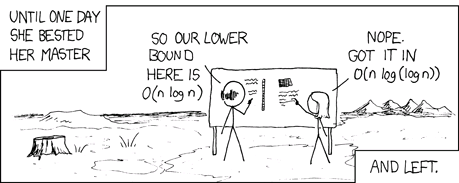If not for the fact that Steven den Beste is already a founding member, I’d label Mark the SDB of the Otakusphere. He’s got another long, deeply insightful essay up, about strategies of choice. The idea is to look critically at Barry Schwartz’s idea of a “paradox of choice” (ie the concept that too much choice is detrimental). A book by Chris Anderson, The Long Tail, devotes some space to analyzing whether the paradox truly exists and whether or not there is a “paradise of choice” instead. Mark deftly summarizes the arguments and lays out his own analysis. Go take a look.
I think that there is some legitimacy to the idea that the paradox of choice represents a limitation of the medium rather than anything inherently wrong with too much choice in the abstract. However, we humans are probably wired for some optimal N in decision-making; an example is that N ~ 100 when it comes to our social circle (I wonder if anyone has explored that using Facebook or LinkedIn as a dataset?). As a strategy, “satisficing” (defining your desired parameters and then choosing the first candidate that meets them rather than trying to find the “best”) is probably the most robust in the long run. The concept is well-described in the aphorism, “perfection is the enemy of the good” and from political candidates to digital cameras, it’s pretty much the only way to make a meaningful choice rather than be ensnared in perpetual indecision.
Philosophically speaking, should there be less choice? Like Mark, I am leery of mandating it to be so, but the question of whether there should be less choice to increase “optimal-ness” (in the abstract sense) is an intriguing one. Is it true, for example, that someone who buys a product where there is relatively less choice (ie, a gaming console) is happier with their choice than someone who buys a product where there is far more choice (like a phone) ? Politics is a natural counterexample; almost no one seems happy with their choice, despite it usually being binary (for all practical purposes). One can then postulate an “optimal” N about which happiness is maximized. But here again I think that too much N is preferable to not enough N, because then at least you have the satisficing strategy to fall back on, whereas there is no such mechanism at the low end.

